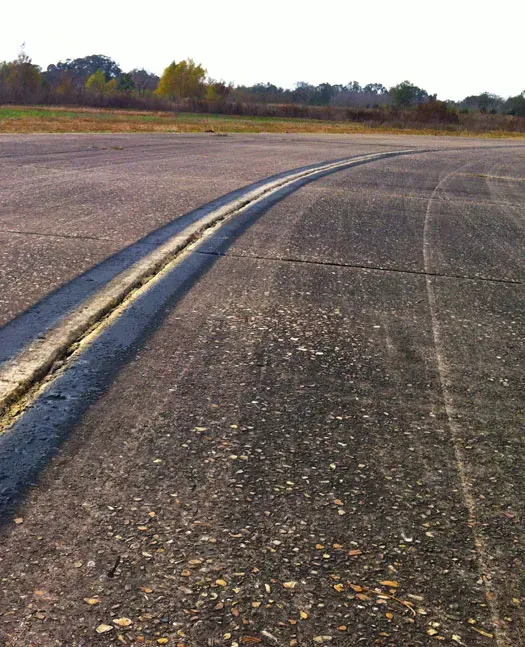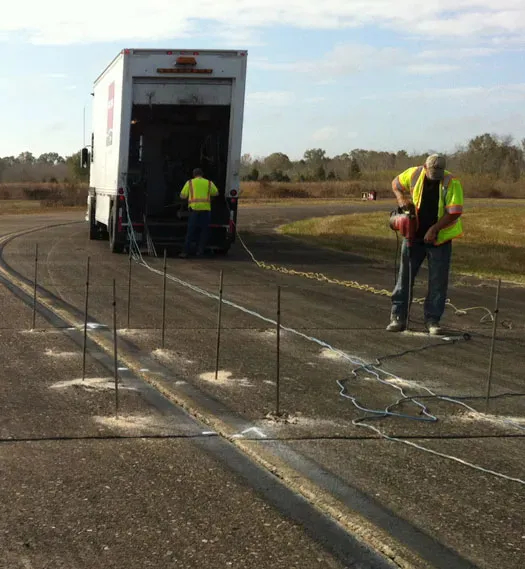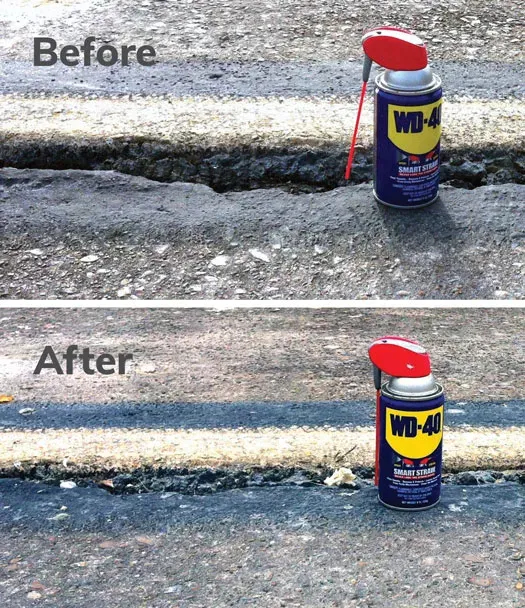Faulted Taxiway Joints Aligned and Stabilized in Louisiana
Problem
A longitudinal joint located on Taxiway A of the St. Landry Parish Airport in Opelousas, Louisiana, was identified as failing. A deteriorated joint seal allowed water to infiltrate and weaken the support soils, which caused differential settlement at the joint up to 1.5 inches over approximately 38 slabs (475 feet total). The airport project engineers were concerned about potential damage to small aircraft and inconvenience for their clients, so they decided to pursue a fast and effective repair solution. The airport hired Forby Contracting as the prime contractor and subcontracted URETEK to stabilize and lift the faulted longitudinal joint in Taxiway A using the URETEK Deep Injection® (UDI) process.
Analysis
The longitudinal joint in question had not been properly sealed for a very long time, and this left the support soils vulnerable to the wet weather conditions in southern Louisiana. In addition, the sub-base was composed of a very wet and sandy clay. The subbase support soils had to be stabilized properly in order to provide a long-term repair rather than just a temporary fix. It was also crucial that URETEK complete the repairs as quickly as possible because the airport was operating at limited capacity during the project. The original proposed timeline for the project was five days.
Solution
The prime contractor resealed the joint, and using UDI, URETEK stabilized and lifted all 38 panels in only three days and with half the estimated material. Pleased with the results, the airport engineer decided to use the remaining quantity of material to perform preventative maintenance on 75 additional panels. The URETEK crew performed the stabilization work on these extra panels in just four days. The entire expanded project of 113 panels was completed in seven days.
Result
URETEK was able to stabilize the subbase, limit material infiltration into the drainable base, lift the panels to grade, and significantly extend the service life of the taxiway. URETEK crews successfully stabilized the soil, matched the 475 feet of longitudinal joints, and performed preventative maintenance on additional panels. The client saved valuable time and money by using the sustainable solution of UDI to preserve their existing pavement rather than fully replace it. URETEK provided a two-year unconditional warranty against settlement for their work, while also saving the airport more than 50% of the cost of replacing the pavement.
URETEK Deep Injection® (UDI)
Widely referenced throughout our industry, UDI involves the injection of structural polymer into base and subgrade soils to increase the load bearing capacity. This is achieved by injecting the polymer through small holes drilled directly through the pavement structure to depths determined by site-specific analysis. Our URETEK 486 Star® material flows easily into voids and weak zones within the soil mass below. Through a controlled chemical reaction, the expanding polymer compacts surrounding soils and applies a controlled pressure on targeted areas of the affected pavement above. If needed, a multi-injection design plan is utilized to gently return the pavement to its original grade. The composite material quickly cures into a strong, dimensionally stable, and water-resistant geo-material, providing years of reliable service.
URETEK 486 Star®
URETEK 486 Star® polymer is a two-component, high-density, expanding thermoset polyurethane system. It was developed to be the ideal solution for under-sealing, void filling, lifting of settled pavement, stabilization and stiffening of weak soils, and for encapsulating and sealing buried infrastructure. URETEK 486 Star® is environmentally inert, non-toxic, and resists underground water erosion or weakening due to its industry-leading hydrophobic properties.


